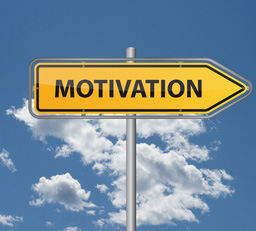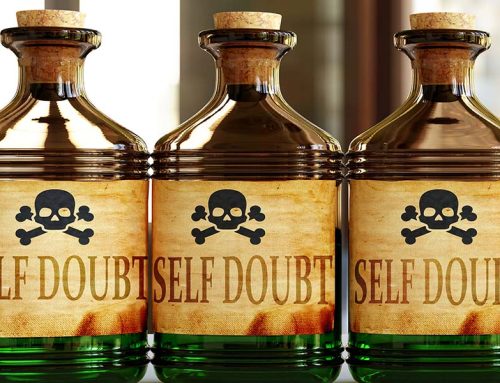“How do I get more motivated?” Outside of “What should I eat?” that’s the number one question I’m asked about getting more results on a diet or exercise program. Almost everyone has up and down days, mentally as well as physically. Fortunately, you can learn how to get motivated instantly, you just need the right strategies.
 What’s unique about these motivation strategies is where they came from. This list didn’t come from psychology research, from professional athletes or even from me. It was created through three surveys – one on facebook, one at the Burn the Fat Inner Circle, and one through email, pulling in over 1300 responses. There were at least 25 unique answers with multiple votes, but I’ve culled them down to the top 10 that had the most responses.
What’s unique about these motivation strategies is where they came from. This list didn’t come from psychology research, from professional athletes or even from me. It was created through three surveys – one on facebook, one at the Burn the Fat Inner Circle, and one through email, pulling in over 1300 responses. There were at least 25 unique answers with multiple votes, but I’ve culled them down to the top 10 that had the most responses.
This is a list of how regular people, just like you, said they got motivated to take action. I’ve simply added my commentary on why I agree that these are some super ideas. Which of these motivates you the most?
Track your progress, your food and your training in a journal
Want a real fitness miracle? It’s not in a supplement bottle – it’s in a journal. Track your progress. Measure everything you want to improve: waist size, body fat percentage, body weight, pounds of fat, pounds of lean and all the health numbers that are important to you – blood pressure, blood sugar, blood lipids and so on. What gets measured gets improved, even without making any other changes. Why? Because it makes you accountable, it forces you to focus on little daily goals, it’s a fun challenge and it’s motivating.
Every sports coach and business manager has always known this, which is why they not only keep score in a game, and track sales, respectively, but also track individual performance down to the last statistic. Every great quarterback knows his completion (and interception) percentage and strives to improve it, and every successful sales person knows her closing ratio and works on increasing it.
It’s no different in your fitness endeavors. The minute you start tracking your food intake, your behavior changes. Don’t believe me? Ask a diet researcher. One of the many reasons that long-term diet studies are so difficult to do is because as soon as you start observing someone and they know it, their behavior changes, whether consciously or unconsciously. Usually that means they are suddenly on their best behavior, which is evidence of measuring results being a great motivational tool, but it’s a frustration to obesity researchers because they can’t get a true gauge of behavior in the human’s natural environment.
The same goes for exercise and weight training. Every good strength coach or personal trainer worth the paper his certification is printed on will get his athletes or clients tracking sets, reps and pounds lifted. Going into every training session with targets to hit or exceed, will instantly start improving your workouts. When your workouts improve, your physique and performance will improve.
The bottom line: People who keep nutrition, training and progress journals are more motivated and get more results than people who don’t.
Look at pictures of yourself.
Many health and fitness transformations begin with a “wake up call” of some kind. Common examples include when your doctor says you’re a candidate for a heart attack (and that “scares the couch potato out of you”). Or when your elevator is out one day, and after climbing 5 flights of stairs to your floor, you’re gasping for breath. Or when you can’t keep up with your teenager. Or when a small child is overheard saying, “My mommy is fat.” Or when you barely fit in the airplane seat.
But the one call to action I’ve heard more often than any other is a photograph. Someone simply saw a picture of themselves. “I didn’t even recognize myself.” I’ve heard that cry for decades. And today in the age of facebook and social photo sharing, I’ve heard it so many more times that I’ve lost count. When the reality of that photo sinks in, feelings of shame, embarrassment, and discontent often follow and prompt a person to say, “THAT’S IT! I don’t want to look like that anymore. That’s not me.” That was the motivating moment that change began.
Looking at after photos next to your old before pictures can generate continued motivation. Many people hate their old fat pictures and are tempted to throw them out. But those old pictures might be the most valuable resource you’ve ever had. They were not only an initial motivation to change, but can now be a key to ongoing motivation and a reminder to never slip back. What a confidence booster it is to look at your before and after transformation photos and deeply relish the work you put in to achieve that.
Try on your skinny clothes.
If you find yourself out of shape with an expanding waistline, try on your favorite pair of pants that you loved to wear when you were in the best shape of your life. When they don’t fit so well, that experience seems to stir up some real emotion in men and women alike. Commit to fit into them again. The worst that can happen is you surpass your previous best shape, your old pants are too big and you need to get them taken in or go shopping for brand new clothes.
Many Burn the Fat readers and clients have told me they avoid getting in the habit of wearing sweatpants or stretch-waistline pants all the time. They know that if they did, they wouldn’t notice the waistline creep unless they looked in the mirror (and if you avoid the mirror and wear stretchy pants, well… that’s double trouble). You need to face the music and track the numbers you want to improve. Waistline is one of them, and there are many others.
Look at yourself in the mirror… without the clothes
I suppose some people might say that seeing a fat or out of shape body reflected in the mirror would get them depressed, not motivated (or make them purposely avoid mirrors). That’s understandable, but I guess this strategy works for so many people because there’s little motivation to change unless you are consciously and vividly aware of your unhappiness with the way things are.
This feeling has been famously described as “divine discontent” or “inspirational dissatisfaction,” to explain how unhappiness with the way things are can be a positive when the feeling is aspirational. It’s only a negative when you don’t notice at all, and when you become indifferent and don’t even care what you look like.
I know a hypnotherapist weight loss coach who says the mirror is the best craving buster he knows. He tells his clients that when they get a sudden craving for fatty, sugar-filled food that’s not on their healthy mean plan, to wait just a few minutes before deciding if you want to eat it. Before deciding, go get in front of a full length mirror, with no clothes on. Take a good look at what you see. Visualize that cheesecake or doughnuts or ice cream sticking to your gut or your butt, and THEN and only then decide if you still want it.
By the way, once you’re in great shape, the mirror can still be a great motivator. It makes you feel great to like what you see in the mirror! Sure, the mirror “plays tricks” with us sometimes because our self-perception is not always objective, so using other progress tracking data as motivators is helpful (and subjective) as well. But even if we are hyper-critical of ourselves looking in the mirror, if that leads to desire for improvement, or satisfaction with our progress, either way, that’s a good motivator.
Set a challenging goal
When you have inspirational dissatisfaction and a challenging goal, that combination is like motivational rocket fuel. Many people know they have a problem, sometimes to the point that they hate the physical condition they are in now. The real problem is, their focus remains there, on “I hate this!”
It’s ok to hate the condition you’re in now, because an out of shape body is not a person, it’s a temporary physical condition and you have the power to change it. But you have to transmute that dissatisfaction into aspiration, and aspiration requires something to aspire to. You must have a goal to focus on.
Every so often I stumble across a book or article that says goal setting doesn’t work and that you shouldn’t set goals. That is the worst advice EVER! Naturally, the big goals must be broken down in to short term goals and action steps and of course fitness goals must have realistic deadlines. But the story of human progress, achievement and success is the story of courageous dreamers who set goals. Big ones. As Brian Tracy once said, “Success is goals. All else is commentary.”
The key is to set goals that are challenging, because those are the goals that not only get you motivated and excited, they make something of you to achieve them. The biggest reward of achieving a goal is not what you get, it’s the kind of person you must become in order to achieve it. The more challenging the goal, the more you grow as a person – in character, in discipline, in confidence and in so many other ways.
If your goal doesn’t scare you and excite you at the same time, your goal is too small.
Think about the feeling you’ll have at the end of your workout
What you choose to focus on has a lot to do with your level of motivation. Most people think about exercise and their focus shifts to the anxiety of being “too busy” to workout. Many people focus on thinking how hard the workout will be, how much it’s going to hurt, and how much they won’t enjoy it. Why not change your focus? It’s your brain – you can focus on what you want.
You’re not alone if you dread going to the gym some days, but I don’t know anyone who doesn’t feel good after a workout. Ok, so maybe you feel physically spent sometimes, but you also feel accomplished, satisfied, confident, stronger, and more powerful.
It’s more than psychological too. Exercise releases endorphins, your body’s natural feel-good chemicals. Too many people today worry about and focus on the wrong thing. The news media is constantly talking about food addiction. Why aren’t people talking about exercise addiction? I mean the positive kind where you get addicted to how damn good it feels to work out and see the results in the mirror and see people’s reactions to your results.
It’s as easy as shifting your focus to those good feelings and the bad ones will fade away.
Remember who looks up to you as a role model
Two questions: One, who are you setting the example for? Your kids? Your students? Your spouse? Your employees? Your teammates? Your friends? Everyone in your social circle? Two, what kind of example are you setting? Remember that you are more influential than you think.
Robert Fulghrum once said, “Don’t worry that children never listen to you, worry that they are always watching you.” When you’re a positive role model for health and fitness, you don’t have to say a word, because how you act and how you look speak much louder than anything you could say. “The world is changed by examples, not by opinions,” says Paulo Coelho. That’s so true isn’t it? Lecturing and nagging other people to work out and eat healthier is not always appreciated. Quietly being an inspiration sure is.
If you want to draw out the best in others, be an exemplar yourself. But also, from a purely “selfish” point of view, remember that maintaining role model status is one of the best strategies to keep yourself motivated and on your toes.
Get involved with the right health and fitness community or group, in person or online
“Get a support system!” You’ve probably heard that before – and for good reason. Social psychology research backs up this advice and and so does real world experience. When you’re down, other people can lift you up better than anything you can do alone.
The two key words here are “right” and “involved.” It’s not enough to join any support group – you need one where you feel you fit in and the vibe resonates with you. It’s also not enough to simply join or belong to a support group. Joining is not enough. Don’t be a “lurker!” Get involved. Participate. Ask for help, advice and support. And return the favor. Support is a circle. Someone helps you achieve your goals, and then you “pay it forward” and help someone else.
Enter a fitness or body transformation challenge
Change starts with you. You must make the decision to change, you must set goals and no one can take action for you. However, once you have accepted personal responsibility for your own transformation, adding external rewards, accountability and excitement in the form of competition will light a fire in you and double your motivation, guaranteed. Competition makes you push and strive in ways you’d never do in the absence of that challenge and the rewards that come with it.
Striving to win is commendable, but competition, especially in fitness, isn’t the greatest reward, nor the only purpose of competing. Competition is a path to personal development and bringing out the best in you. Rarely will you ever express anywhere near your full potential or display peak performance without a reason why – and competition, or at least a specific challenging goal – gives you a reason.
For those who don’t compete in organized sports or enter onstage physique or bodybuilding contests, there are countless opportunities to enter body transformation and fitness contests every year and many of them can be entered online. Every year, thousands enter our Burn the Fat challenge. Thousands enter ever year. Look for our transformation success stories and announcements about new challenges at www.burnthefatinnercircle.com
Read or re-read burn the fat feed the muscle
Burn the Fat, Feed the Muscle is not just a fitness information bible, it’s a motivation manifesto as well.
There are four elements required to make a total body transformation: nutrition, resistance training, cardio training and mental training. Burn the Fat, Feed the Muscle is rich with motivational gems from start to finish, but the core of the motivation secret is contained in the chapter on setting goals and training your mind. I’m not sure which of these four elements you’re missing – almost everybody is missing (or slacking on) at least one, and for many, lack of a motivation strategy is the biggest weak spot.
Now, Go Get To It!
Start using some of these 10 strategies today, because most of them can be applied instantly. If you want to learn more and you want to see how motivation integrates into a complete nutrition and training lifestyle, grab a copy of Burn the Fat, Feed the Muscle. The new revised and updated hardcover AND audiobook editions are now available: www.burnthefatfeedthemuscle.com
If you found this post helpful, click the LIKE button and please share and I’ll come back with more tips in the mind and motivation category in future posts!
– Tom Venuto, author of Burn the Fat, Feed the Muscle.
Subscribe to the Burn the Fat weekly newsletter and get my ebook, "The 20 Best Fat-Burning, Muscle-Building Recipes Of All Time" FREE!
Your email is safe with me!






Another reason. Look at other people who are in the worse health and fitness possible, as well as gobbling as many as 10 to 15 different prescriptions and meds a day, just to make it another 24 hours. Do you really want to end up like that?
Yep. Thanks alex. That was on the survey list too I think in the top 15 or so. Cheers.
*NO* ……*ALEX*….. I MOST CERTAINLY DO NOT WANT TO END UP LIKE THAT.*LUCKY FOR *ME*….GOD IS A FIRM BELIEVER IN TOM VENUTO. I PRAY THAT YOU WILL CONTINUE TO FOLLOW IN HIS LANNE .
You’ve mentioned before the idea of Community, basically associating with those of like mind and wanting to stay with “the pack”. I’m committed to my bodybuilding lifestyle. However, being encouraged and challenged by friends, trainers, people on Facebook, and watching inspiring videos is always a great affirmation of my own choices.
Do you have any advice or an article on staying motivated through injury? I’ve been able to maintain my 30 lb weight loss (after giving birth)for the past 5 years but it hasn’t been easy. Since then, I’ve developed runner’s knee, vertigo, tendinitis in the wrist so I’ve had to adjust my workouts & my diet to compensate (I took up swimming, walking, & learned to use the mouse with my left hand got rid of the tendinitis). This year I started running again but developed baker’s cyst in my right knee (so I’m back to walking) & I now have tendinitis in my shoulder (no more swimming & heavy weights) & I’m going to physcial therapy. So now I’m focusing on corework & lost an inch from my waist as a result. I’m determined to stay fit despite these obstacles but I truly miss the endorphins I get from running & heavy lifting.
Jer,sorry to hear about your injury challenges. It happens to most of us at some time or another and forces us to work around it. And that, at the risk of being overly simplistic, is the answer – work around it. And on the mental side, focus on what you CAN do not on what you can’t. when worst case scenario occurs and you cant train at all just tell yourself “this too shall pass” and heal up, get strong again and keep in mind that after a rest when you come back to training you often get the best gains you have in years. And lastly, you can control your body composition a LOT with nutrition alone. So when training is curtailed its time to REALLY dial in the nutrition. If one of your goals is body fat reduction, you can look up knowing that you can reduce fat with nutritional intervention alone and no training. The catch is you do have to eat quite a bit less: common mistake: when injury forces layoff, continuing to eat the same amount as before when you were active.
Tom, thank you so much for your response. I really appreciate it more than you’ll ever know…I’ve printed it out & placed it on my mirror where I can see it everyday for motivation. I’ve been working around my injuries for years but this is the first time I’ve had to deal with two injuries at once & it’s been really difficult. I know I shouldn’t be too hard on myself as I’m still in better shape than most people I know (even those younger than me) despite being in my 40’s. Thank you again.
Awesome article!! Love it! For having tried many of those above techniques I can testify that they are working! Thanks for adding new tools for our motivation! :)
My favorite one is “look at yourself in the mirror – without the clothes.” I remember when I got up to 218 pounds of fat (to give perspective I’m 158 right now). I went to the tanning bed one day. I had been avoiding my reflection, but caught a glimpse of myself in the full length mirror. It was horrific. I left there and started losing fat – 6 months later I was back down to normal in the 150’s. The mirror is indeed a powerful motivator.
Great article Tom!
Jay
I like your article. It is very informative so it is very useful for my job. Thanks for sharing this post. Hope to read more helpful information from you. Have a nice day!
Tom,
You are an inspiration and life changer. Your book changed my life and inspired me to create the TeamPJW 5-Minute Pajama workout. ‘The Workout for Real People’ This workout is a full-body workout and program that incorporates many of your principles, visualizations, psychology, journaling, and positive energy. By doing a little something each day, you will tone up and feel better and have more energy to do more activities. I lost over 20 pounds with this program and have kept it off. It is sustainable for life, and is really about making health a priority everyday! Thank you for your program and book, which is recommended in the Team PJW 5-Minute Pajama workout. TeamPJW.com